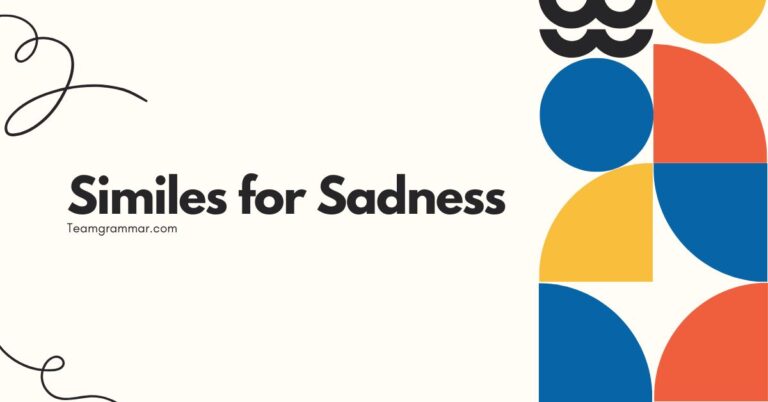37 Similes for Hair: Enhance Your Descriptive Writing
Understanding and using similes effectively can dramatically improve your writing, making it more vivid and engaging. Similes, a figure of speech that compares two unlike things using “like” or “as,” are particularly useful in descriptive writing, especially when describing physical attributes such as hair.
This article provides a comprehensive guide to using similes to describe hair, covering definitions, structural breakdowns, usage rules, common mistakes, and plenty of examples. Whether you’re a student, writer, or language enthusiast, this guide will equip you with the knowledge and tools to master the art of crafting compelling similes for hair.
By exploring a variety of similes applicable to different hair types, colors, and conditions, you will learn how to create striking imagery and add depth to your descriptions. This article is designed for English language learners, creative writers, and anyone looking to enhance their descriptive abilities.
Through clear explanations, abundant examples, and practical exercises, this article aims to make the process of learning and applying similes both enjoyable and effective.
Table of Contents
- Definition of Simile
- Structural Breakdown of Similes
- Types of Hair Similes
- Examples of Similes for Hair
- Usage Rules for Similes
- Common Mistakes with Similes
- Practice Exercises
- Advanced Topics: Nuance and Subtlety
- Frequently Asked Questions
- Conclusion
Definition of Simile
Asimileis a figure of speech that compares two unlike things using the words “like” or “as.” Its primary function is to create a vivid and imaginative connection between the two subjects, enhancing the reader’s understanding or appreciation of the subject being described. Similes are a powerful tool in descriptive writing, allowing writers to evoke imagery and convey emotions more effectively.
They are commonly used in literature, poetry, and everyday conversation to add color and emphasis.
Similes are a subset of figurative language, which also includes metaphors, personification, and hyperbole. Unlike metaphors, which directly equate two things (e.g., “He is a lion”), similes draw a comparison using “like” or “as” (e.g., “He is as brave as a lion”).
This distinction is crucial in understanding the subtle yet significant difference in how these figures of speech operate. The use of similes makes descriptions more relatable and accessible, as they provide a point of reference that readers can easily grasp.
In the context of describing hair, similes can be used to illustrate its color, texture, style, condition, and overall appearance. For instance, instead of simply stating that someone’s hair is blonde, you could say, “Her hair was as golden as a field of wheat.” This paints a much more compelling picture and engages the reader’s imagination.
The effectiveness of a simile depends on the originality and relevance of the comparison being made.
Structural Breakdown of Similes
A simile generally consists of three main components: the subject, the comparison word (“like” or “as”), and the object of comparison. Understanding these components is essential for constructing effective and meaningful similes.
- Subject: This is the thing being described. In the context of this article, the subject is hair.
- Comparison Word: This is the word that establishes the comparison, either “like” or “as.”
- Object of Comparison: This is the thing to which the subject is being compared. It should be something that shares a relevant characteristic with the subject.
The basic structure of a simile can be represented as:Subject + Comparison Word + Object of Comparison. For example, in the simile “Her hair was like spun gold,” “her hair” is the subject, “like” is the comparison word, and “spun gold” is the object of comparison.
The effectiveness of the simile lies in the aptness of the comparison – how well spun gold represents the color and texture of the hair.
Similes can also be structured with “as…as,” which is used to emphasize the degree of similarity. For instance, “Her hair was as dark as midnight” uses the “as…as” structure to highlight the intensity of the hair’s darkness.
The choice between “like” and “as…as” often depends on the specific nuance the writer wishes to convey.
While the structure of a simile is relatively straightforward, crafting a compelling simile requires careful consideration of the object of comparison. The object should not only share a characteristic with the subject but also evoke a specific image or feeling in the reader’s mind.
A well-chosen object of comparison can transform a simple description into a vivid and memorable one.
Types of Hair Similes
Similes for hair can be categorized based on the aspect of hair they describe. The main categories include color, texture, style, and condition.
Each category offers a unique set of possibilities for creating descriptive and engaging comparisons.
Similes Describing Hair Color
Color similes are used to compare the color of hair to other objects or substances that share a similar hue. These similes can range from simple comparisons to more imaginative and evocative ones.
Common colors described using similes include blonde, brunette, red, black, and gray.
Similes Describing Hair Texture
Texture similes focus on the feel and consistency of hair, such as whether it is smooth, coarse, curly, straight, or frizzy. These similes often involve comparisons to materials or substances that have a similar texture, allowing readers to imagine the sensation of touching the hair.
Similes Describing Hair Style
Style similes describe the way hair is arranged or styled, such as braided, updo, loose, or windswept. These similes can evoke a particular mood or personality associated with the hairstyle.
Similes Describing Hair Condition
Condition similes describe the health and appearance of hair, such as whether it is shiny, dull, dry, or oily. These similes often compare the hair to objects or substances that have similar qualities.
Examples of Similes for Hair
The following sections provide numerous examples of similes for hair, organized by category. Each example aims to illustrate the diverse ways in which similes can be used to describe hair effectively.
Color Similes Examples
Color similes bring vibrancy and depth to descriptions of hair, allowing readers to visualize the exact shade and tone. The table below provides a range of examples, from common to more imaginative comparisons.
| Simile | Explanation |
|---|---|
| Her hair was as golden as a field of wheat. | Compares blonde hair to the bright, sunny color of a wheat field. |
| His hair was like a raven’s wing. | Compares black hair to the glossy, dark feathers of a raven. |
| Her red hair was like a sunset on fire. | Compares red hair to the vibrant, fiery colors of a sunset. |
| His gray hair was like a winter frost. | Compares gray hair to the pale, icy appearance of frost. |
| Her brunette hair was as rich as dark chocolate. | Compares brunette hair to the deep, luxurious color of dark chocolate. |
| His hair was like burnished copper. | Compares reddish-brown hair to the shiny, metallic color of burnished copper. |
| Her blonde hair shone like liquid sunshine. | Compares blonde hair to the bright, radiant appearance of sunshine. |
| His jet-black hair was like polished obsidian. | Compares very dark hair to the smooth, reflective surface of obsidian. |
| Her auburn hair glowed like autumn leaves. | Compares auburn hair to the warm, reddish-brown colors of autumn leaves. |
| His silver hair was like moonlight on water. | Compares silver hair to the shimmering, reflective quality of moonlight on water. |
| Her hair was the color of spun gold, like a fairy tale princess. | Evokes a magical and ethereal quality, enhancing the description of golden blonde hair. |
| His hair, as dark as midnight, framed his face. | Emphasizes the deep, intense darkness of the hair. |
| Her hair, a cascade of copper, was like a flowing river of metal. | Paints a vivid picture of reddish-brown hair, emphasizing its abundance and sheen. |
| His blonde hair, like sun-kissed straw, hinted at days spent outdoors. | Suggests a natural, sun-bleached quality to the hair. |
| Her gray hair, as soft as dove feathers, spoke of wisdom and experience. | Implies a gentle, wise nature, associating the hair color with age and knowledge. |
| His ginger hair, like a flickering flame, caught the light. | Highlights the vibrant, fiery nature of ginger hair. |
| Her ash-blonde hair, as pale as winter snow, gave her an ethereal look. | Creates an image of delicate beauty, emphasizing the light, cool tones of the hair. |
| His chocolate brown hair shone like polished mahogany. | Compares the rich, deep brown color of the hair to the luxurious look of polished mahogany wood. |
| Her platinum blonde hair shimmered like moonlight on ice. | Creates a striking image of very light blonde hair, emphasizing its brightness and coolness. |
| His salt-and-pepper hair, like a seasoned veteran, told tales of time. | Suggests experience and resilience, associating the mix of gray and dark hair with age and wisdom. |
| Her hair was as black as the night sky. | Emphasizes the deep and intense black color of her hair. |
| His hair was like a field of ripe barley. | Compares blonde or light brown hair to the color and texture of a barley field. |
| Her silver strands were like threads of moonlight woven into her hair. | Creates a magical image of silver or gray hair, emphasizing its delicate beauty. |
| His hair was the color of rich, dark earth. | Compares dark brown or black hair to the natural color of fertile soil. |
| Her hair shone like strands of copper wire. | Highlights the reddish-brown color and metallic sheen of her hair. |
| His hair was as white as freshly fallen snow. | Emphasizes the pure white color of his hair. |
| Her hair was like a molten river of gold. | Creates a vivid image of flowing blonde hair, emphasizing its brightness and abundance. |
Texture Similes Examples
Texture similes help readers feel the hair, even without touching it. These similes often compare hair to materials known for their distinct textures.
| Simile | Explanation |
|---|---|
| Her hair was as soft as silk. | Compares the hair’s texture to the smooth, delicate feel of silk. |
| His hair was like a wire brush. | Compares the hair’s texture to the stiff, coarse feel of a wire brush. |
| Her curly hair was like a mass of tangled springs. | Compares curly hair to the coiled, springy nature of metal springs. |
| His straight hair was like polished ebony. | Compares straight hair to the smooth, sleek surface of polished ebony wood. |
| Her frizzy hair was like a cloud of cotton candy. | Compares frizzy hair to the light, airy texture of cotton candy. |
| His thick hair was like a dense forest. | Compares thick hair to the abundant, overgrown nature of a forest. |
| Her fine hair was like strands of spider silk. | Compares fine hair to the delicate, almost invisible threads of spider silk. |
| His coarse hair felt like horsehair. | Compares coarse hair to the rough, wiry texture of horsehair. |
| Her wavy hair flowed like gentle ripples on a pond. | Compares wavy hair to the soft, undulating movement of water ripples. |
| His hair was as smooth as glass. | Compares the hair’s texture to the sleek, frictionless surface of glass. |
| Her hair felt like a cloud of feathers, light and airy. | Emphasizes the lightness and softness of the hair’s texture. |
| His hair, as rough as sandpaper, was a stark contrast to his gentle eyes. | Highlights the contrast between the harsh texture of the hair and the softness of the eyes. |
| Her curls, like tightly wound springs, bounced with every step. | Emphasizes the elasticity and energy of the curly hair. |
| His hair, as straight as a ruler, was impeccably styled. | Highlights the perfect straightness and neatness of the hair. |
| Her hair felt like a bird’s nest, tangled and unruly. | Suggests a wild, unkempt quality to the hair. |
| His hair, as thick as wool, kept him warm in the winter. | Emphasizes the density and warmth of the hair. |
| Her hair was like angel hair pasta, fine and delicate. | Compares the hair’s texture to the thin, delicate strands of angel hair pasta. |
| His hair felt like straw, dry and brittle. | Suggests a lack of moisture and health in the hair. |
| Her hair was as bouncy as a trampoline. | Compares the hair’s texture and movement to the elasticity of a trampoline. |
| His hair was like a Brillo pad, stiff and wiry. | Compares the hair’s texture to the rough, abrasive surface of a Brillo pad. |
| Her hair was as soft as a kitten’s fur. | Emphasizes the gentle and delicate feel of her hair. |
| His hair felt like tangled fishing line. | Suggests a difficult-to-manage and knotted texture. |
| Her hair was like a waterfall of velvet. | Creates a luxurious image of flowing hair with a smooth and soft texture. |
| His hair felt like wiry steel wool. | Highlights the harsh and unyielding texture of his hair. |
| Her hair was as smooth as polished marble. | Compares the hair’s texture to the sleek and cool surface of marble. |
| His hair was like a matted rug. | Suggests a tangled and unkempt appearance. |
| Her hair was as delicate as spun sugar. | Emphasizes the fine and fragile nature of her hair. |
Style Similes Examples
Style similes add flair to descriptions by comparing hairstyles to familiar images or objects.
| Simile | Explanation |
|---|---|
| Her braided hair was like a woven tapestry. | Compares braided hair to the intricate and artistic design of a tapestry. |
| His updo was like a sculpted masterpiece. | Compares an updo hairstyle to the carefully crafted form of a sculpture. |
| Her loose hair flowed like a river. | Compares loose hair to the free-flowing movement of a river. |
| His windswept hair looked like a bird’s nest. | Compares windswept hair to the disheveled appearance of a bird’s nest. |
| Her ponytail swung like a pendulum. | Compares the movement of a ponytail to the rhythmic swing of a pendulum. |
| His neatly combed hair was like a perfectly aligned row of soldiers. | Compares neatly combed hair to the orderly arrangement of soldiers in a row. |
| Her messy bun looked like a haphazardly built tower. | Compares a messy bun to the uneven and unplanned structure of a tower. |
| His dreadlocks hung like thick ropes. | Compares dreadlocks to the heavy, sturdy appearance of thick ropes. |
| Her bob was as sharp as a knife. | Compares a bob hairstyle to the clean, precise cut of a knife. |
| His spiky hair looked like a crown of thorns. | Compares spiky hair to the sharp, pointed appearance of a crown of thorns. |
| Her hair, styled in intricate braids, resembled a Celtic knot. | Highlights the complexity and artistry of the braided hairstyle. |
| His slicked-back hair, as smooth as glass, gave him a sophisticated air. | Emphasizes the sleekness and elegance of the hairstyle. |
| Her curls, cascading down her back, looked like a waterfall of ringlets. | Creates a vivid image of flowing, curly hair. |
| His hair, cropped short and neat, was like a well-manicured lawn. | Highlights the tidiness and precision of the haircut. |
| Her hair, piled high on her head, looked like a queen’s tiara. | Suggests a regal and elegant hairstyle. |
| His hair, parted perfectly, was as precise as a mathematical equation. | Emphasizes the exactness and orderliness of the hairstyle. |
| Her hair, twisted into a chignon, resembled a delicate sculpture. | Compares the hairstyle to a work of art, highlighting its beauty and intricacy. |
| His hair was styled like a rock star’s mane. | Compares the hairstyle to the iconic and often wild look of a rock star. |
| Her hair was arranged like a carefully constructed origami. | Suggests a precise and artistic arrangement of the hair. |
| His hair was sculpted like a piece of modern art. | Compares the hairstyle to a unique and creative artistic expression. |
| Her hair was as perfectly coiffed as a beauty queen’s. | Emphasizes the flawless and polished appearance of her hairstyle. |
| His hair was styled into a pompadour, like a blast from the past. | Suggests a vintage and retro style. |
| Her hair was pinned up, resembling a cluster of dark flowers. | Creates an image of elegance and beauty. |
| His hair was as wild and untamed as a jungle. | Suggests a carefree and rebellious style. |
| Her hair was styled with such precision, it was like a work of architectural genius. | Emphasizes the skill and artistry involved in creating the hairstyle. |
| His hair was tousled like a rumpled bedsheet. | Suggests a casual and effortless style. |
| Her hair was adorned with jewels, like a royal treasure. | Creates a sense of opulence and grandeur. |
Condition Similes Examples
Condition similes describe the health and vitality of hair, often comparing it to substances that embody similar qualities.
| Simile | Explanation |
|---|---|
| Her shiny hair was like a polished mirror. | Compares shiny hair to the reflective surface of a mirror. |
| His dull hair was like dried straw. | Compares dull hair to the lifeless appearance of dried straw. |
| Her dry hair was like brittle paper. | Compares dry hair to the easily breakable nature of brittle paper. |
| His oily hair was like a slick of grease. | Compares oily hair to the slippery, greasy feel of oil. |
| Her healthy hair bounced like a spring. | Compares healthy hair to the resilient, springy movement of a metal spring. |
| His damaged hair was like frayed rope. | Compares damaged hair to the worn, unraveling appearance of frayed rope. |
| Her vibrant hair glowed like a halo. | Compares vibrant hair to the radiant, ethereal glow of a halo. |
| His lifeless hair hung like limp seaweed. | Compares lifeless hair to the drooping, unmoving appearance of limp seaweed. |
| Her nourished hair shone like liquid gold. | Compares nourished hair to the rich, radiant appearance of liquid gold. |
| His brittle hair snapped like dry twigs. | Compares brittle hair to the easily breakable nature of dry twigs. |
| Her hair, full of life, danced like flames in the wind. | Emphasizes the vitality and movement of healthy hair. |
| His hair, as dull as lead, lacked any luster. | Highlights the absence of shine and vibrancy in the hair. |
| Her split ends looked like the frayed edges of an old tapestry. | Suggests damage and wear in the hair. |
| His hair, as oily as a mechanic’s rag, needed a good wash. | Emphasizes the excessive oiliness of the hair. |
| Her hair, revitalized by the treatment, shone like a new penny. | Highlights the restored health and shine of the hair. |
| His hair, as dry as the desert, soaked up the conditioner. | Emphasizes the extreme dryness of the hair. |
| Her hair, strengthened by the vitamins, was as resilient as steel. | Compares the hair’s strength to the durability of steel. |
| His hair was as lackluster as a cloudy day. | Compares the hair’s dullness to the absence of sunlight on a cloudy day. |
| Her hair was as radiant as the morning sun. | Compares the hair’s shine and vitality to the brightness of the morning sun. |
| His hair felt like a field of dried grass. | Suggests a lack of moisture and vitality. |
| Her hair was as vibrant as a blooming garden. | Emphasizes the health and beauty of her hair. |
| His hair looked as lifeless as a forgotten doll’s. | Suggests a lack of care and vitality. |
| Her hair was as lustrous as a pearl. | Compares the hair’s shine to the smooth and iridescent surface of a pearl. |
| His hair felt like a brittle bird’s nest. | Suggests dryness and fragility. |
| Her hair was as radiant as a summer sky. | Emphasizes the brightness and health of her hair. |
| His hair was as parched as desert sand. | Suggests extreme dryness and lack of moisture. |
| Her hair was as full of vitality as a thriving plant. | Emphasizes the health and strength of her hair. |
Usage Rules for Similes
Using similes effectively involves more than just understanding their structure. It also requires adhering to certain usage rules to ensure clarity and impact.
Here are some key guidelines to follow:
- Ensure Relevance: The object of comparison should have a clear and relevant connection to the subject. The comparison should enhance the reader’s understanding or appreciation of the subject.
- Avoid Clichés: Overused similes, such as “as busy as a bee” or “as strong as an ox,” can make your writing sound unoriginal. Strive to create fresh and imaginative comparisons.
- Maintain Clarity: The simile should be easy to understand. Avoid using obscure or overly complex objects of comparison that may confuse the reader.
- Consider Context: The appropriateness of a simile depends on the context of your writing. A simile that works well in a poem may not be suitable for a technical report.
- Use Sparingly: While similes can enhance your writing, using too many can make it feel contrived and overwhelming. Use them judiciously to create the greatest impact.
Additionally, be mindful of cultural and regional differences in understanding. A simile that resonates with one audience may not have the same effect on another.
Consider your target audience when choosing your objects of comparison.
The key to mastering similes is practice. Experiment with different comparisons and pay attention to how they affect the overall tone and impact of your writing.
Over time, you will develop a sense for what works and what doesn’t, allowing you to craft similes that are both effective and memorable.
Common Mistakes with Similes
Even experienced writers can make mistakes when using similes. Here are some common errors to watch out for:
- Mixing Metaphors and Similes: Confusing the direct comparison of a metaphor with the “like” or “as” comparison of a simile.
- Using Illogical Comparisons: Creating similes where the object of comparison doesn’t logically relate to the subject.
- Overusing Similes: Cluttering writing with too many similes, which can detract from the overall impact.
- Employing Clichés: Relying on overused similes that lack originality and impact.
Here’s a table illustrating some common mistakes and their corrections:
| Incorrect | Correct | Explanation |
|---|---|---|
| Her hair was a golden sun, like spun gold. | Her hair was like spun gold. | Avoid redundancy by only using one figure of speech. |
| His hair was like a car. | His hair was like a tangled mess. | Ensure the comparison is logical and relevant. |
| Her hair was like silk, like velvet, like satin. | Her hair was like silk. | Avoid overuse by using only one effective simile. |
| His hair was as black as coal. | His hair was like a raven’s wing. | Replace clichés with more original comparisons. |
| The hair was as hair as hair. | The hair was as soft as silk. | Ensure the object of comparison is different than the subject |
By being aware of these common mistakes, you can avoid them in your own writing and craft similes that are both effective and impactful. Regularly review your writing to identify and correct any errors, and seek feedback from others to gain a fresh perspective on your work.
Practice Exercises
Test your understanding of similes with these practice exercises. Fill in the blanks to complete the similes, or rewrite the sentences using similes.
- Her hair was as __________ as a field of wheat.
- His hair was like a __________ wing.
- Her red hair was like a __________ on fire.
- His gray hair was like a __________ frost.
- Her brunette hair was as rich as dark __________.
- Rewrite: Her hair was very soft. (Use a simile)
- Rewrite: His hair was very coarse. (Use a simile)
- Rewrite: Her curly hair was very tangled. (Use a simile)
- Rewrite: His straight hair was very shiny. (Use a simile)
- Rewrite: Her frizzy hair was very light. (Use a simile)
Here are the answers to the practice exercises:
| Question | Answer |
|---|---|
| 1. Her hair was as __________ as a field of wheat. | golden |
| 2. His hair was like a __________ wing. | raven’s |
| 3. Her red hair was like a __________ on fire. | sunset |
| 4. His gray hair was like a __________ frost. | winter |
| 5. Her brunette hair was as rich as dark __________. | chocolate |
| 6. Rewrite: Her hair was very soft. (Use a simile) | Her hair was as soft as silk. |
| 7. Rewrite: His hair was very coarse. (Use a simile) | His hair was like a wire brush. |
| 8. Rewrite: Her curly hair was very tangled. (Use a simile) | Her curly hair was like a mass of tangled springs. |
| 9. Rewrite: His straight hair was very shiny. (Use a simile) | His straight hair was like polished ebony. |
| 10. Rewrite: Her frizzy hair was very light. (Use a simile) | Her frizzy hair was like a cloud of cotton candy. |
Continue practicing by creating your own similes for different aspects of hair. The more you experiment, the more comfortable and confident you will become in using similes effectively.
More Practice
- Complete the simile: The child’s blonde hair was as bright as __________.
- Complete the simile: Her long, black hair flowed like __________.
- Complete the simile: His red hair was as fiery as __________.
- Complete the simile: Her curly hair bounced like __________.
- Complete the simile: His grey hair was like __________.
- Rewrite the sentence using a simile: Her hair was extremely damaged.
- Rewrite the sentence using a simile: His hair was impeccably styled.
- Rewrite the sentence using a simile: Her hair was very oily.
- Rewrite the sentence using a simile: His hair was completely unmanageable.
- Rewrite the sentence using a simile: Her hair shone magnificently.
| Question | Answer |
|---|---|
| 1. Complete the simile: The child’s blonde hair was as bright as __________. | The sun |
| 2. Complete the simile: Her long, black hair flowed like __________. | A river of ink |
| 3. Complete the simile: His red hair was as fiery as __________. | A dragon’s breath |
| 4. Complete the simile: Her curly hair bounced like __________. | Springs |
| 5. Complete the simile: His grey hair was like __________. | A winter storm |
| 6. Rewrite the sentence using a simile: Her hair was extremely damaged. | Her hair was like a frayed rope, damaged and worn. |
| 7. Rewrite the sentence using a simile: His hair
was impeccably styled. |
His hair was styled as precisely as an architect’s blueprint. |
| 8. Rewrite the sentence using a simile: Her hair was very oily. | Her hair was as oily as a slickened road after a rain. |
| 9. Rewrite the sentence using a simile: His hair was completely unmanageable. | His hair was like a wild jungle, completely unmanageable. |
| 10. Rewrite the sentence using a simile: Her hair shone magnificently. | Her hair shone magnificently, like a halo in the sunlight. |
Advanced Topics: Nuance and Subtlety
Mastering the art of simile involves understanding and applying nuance and subtlety. Advanced simile usage goes beyond simple comparisons to evoke deeper meanings and emotions.
Here are some techniques to explore:
- Implied Similes: Instead of directly using “like” or “as,” imply a comparison through carefully chosen words and imagery.
- Sensory Details: Engage multiple senses to make the simile more vivid and impactful. Consider not just how the hair looks, but also how it feels, smells, or even sounds.
- Cultural References: Use cultural references to add depth and meaning to your similes, but be mindful of your audience’s understanding.
- Emotional Resonance: Choose objects of comparison that evoke specific emotions, enhancing the emotional impact of your writing.
For example, instead of saying “Her hair was as dark as night,” you could say “Her hair absorbed the light, leaving shadows in its wake,” implying a similar darkness but with a more evocative and mysterious tone.
Consider the following examples:
- Basic: His hair was like straw.
- Advanced: His hair whispered of sun-scorched fields, brittle and lifeless under a relentless sky.
The advanced example adds layers of sensory detail and emotional resonance, transforming a simple comparison into a powerful image.
Frequently Asked Questions
Conclusion
Similes are a powerful tool for enhancing descriptive writing, particularly when it comes to illustrating the qualities of hair. By understanding the structure of similes, adhering to usage rules, avoiding common mistakes, and practicing regularly, you can master the art of crafting compelling and memorable comparisons.
Experiment with different types of similes, explore advanced techniques, and always strive to create original and impactful imagery. With practice and attention to detail, you can transform your writing and bring your descriptions to life.







